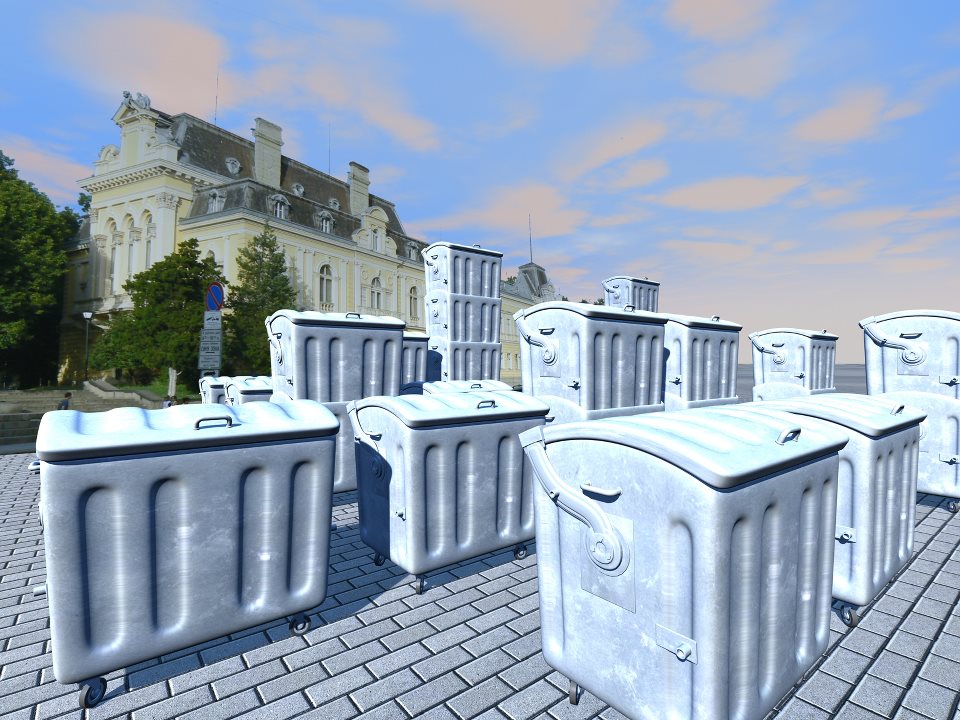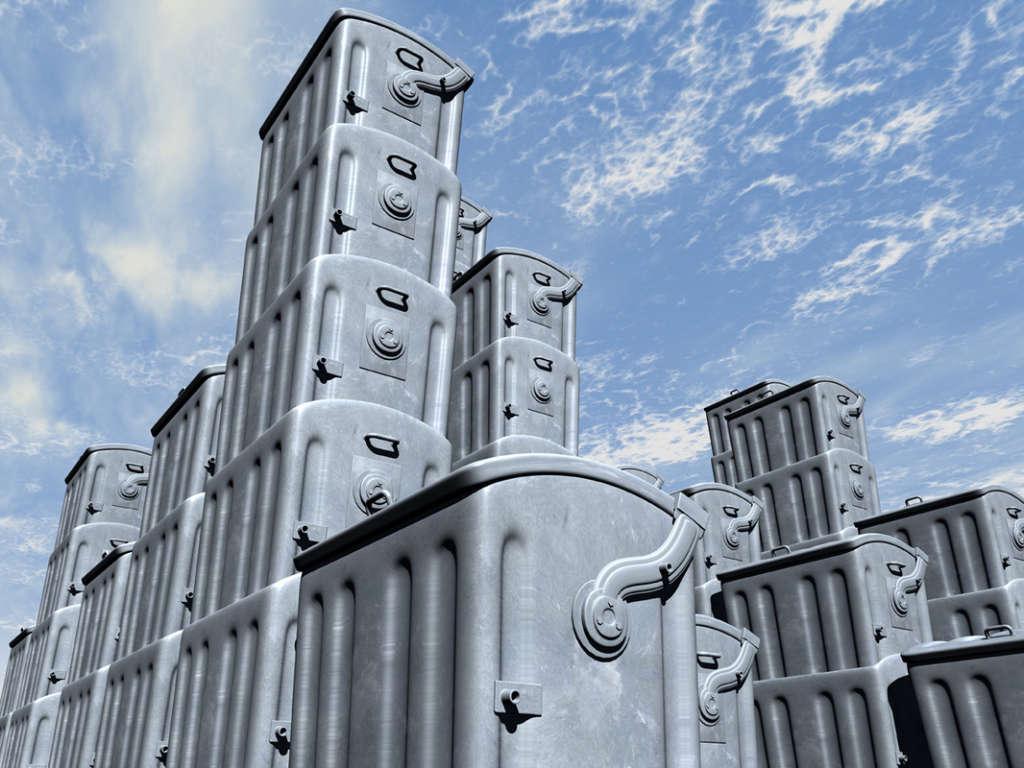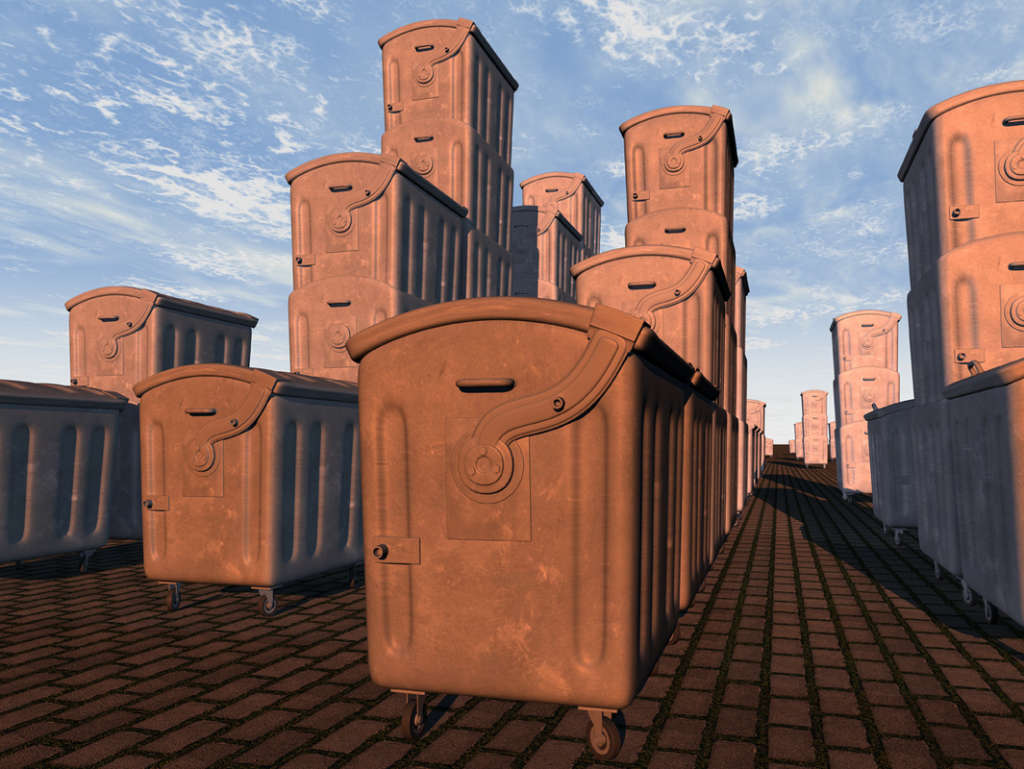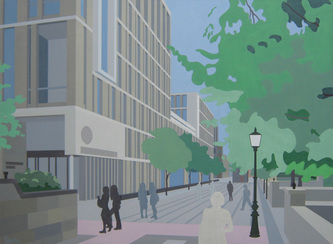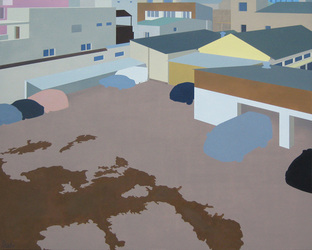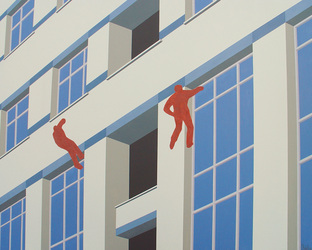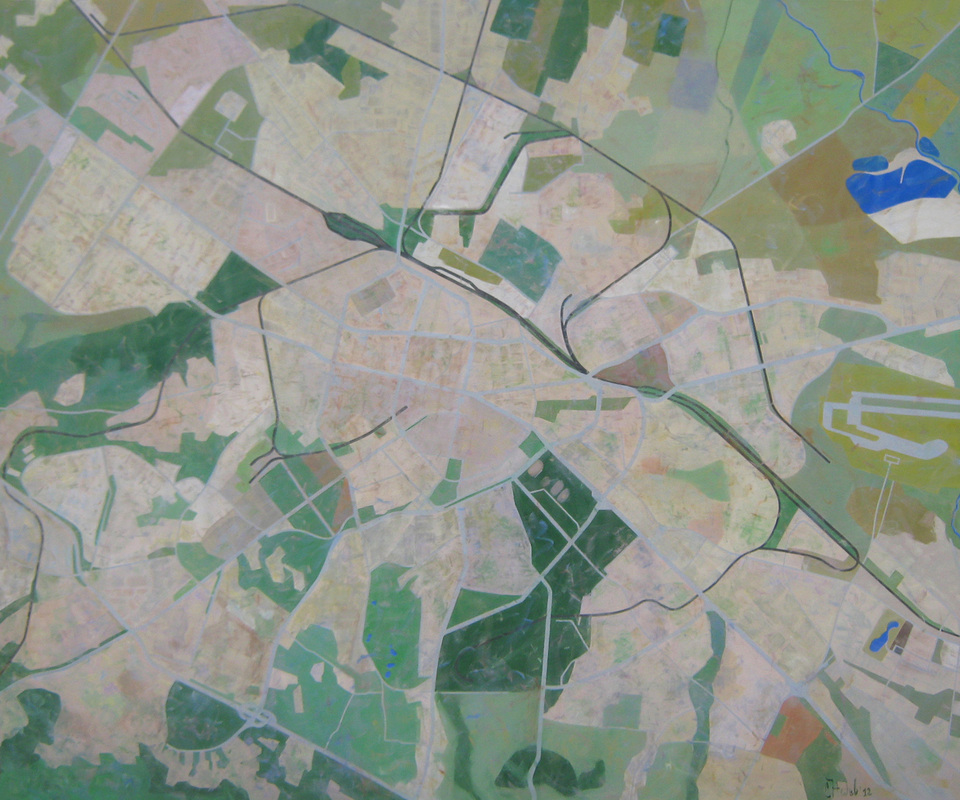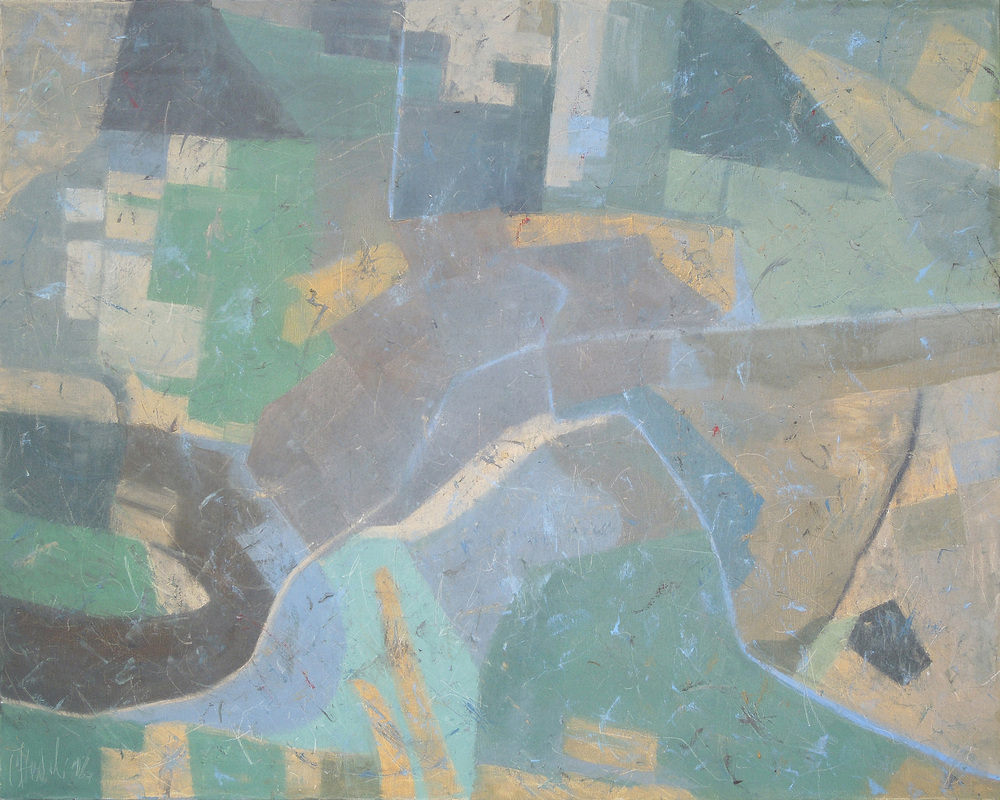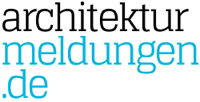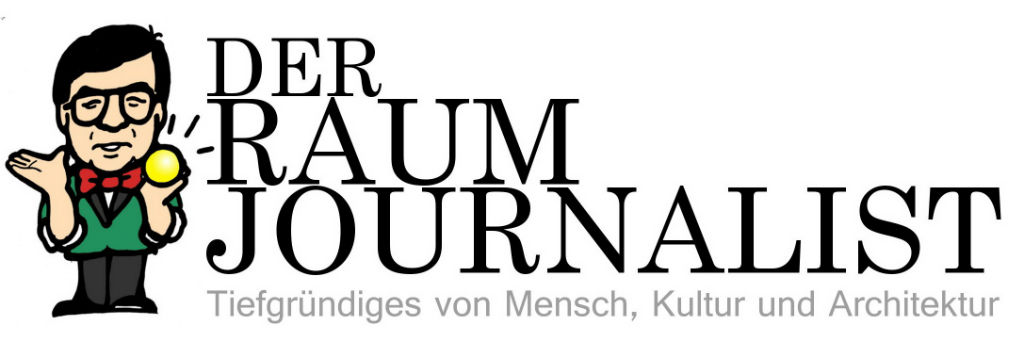“There are cities in the world that are really terrible places to live in.” INTERVIEW with Slav Nedev
What if … the “real” face of our cities wasn’t made of stone, concrete, glass, but of uniform metal containers? Trash containers, more precisely? A strange sight, or rather a consequent one? Bulgarian artist Slav Nedev is working on an installation project, Biotope, intends to create a“city” of trash containers. The city as collecting vessel of  consumption, waste, trash … the associations are as shocking as they are striking.Â
Currently Biotope consists of illustrations made using a computer and 3D software which offers a certain flexibility with regard to the modeling and environment making possible the creation of such a fiction. A project initiative pursuing the realization of the installation in Sofia is in progress.
As an artist Nedev has gone through various periods of interest, experimentation, and exploration of media and size. He stresses out how he always needs to get involved emotionally and mentally with a theme, being it a media or social, a philosophical or psychological problem, in order to start exploring it through the means of art. Usually such involvement results in a series of works. Once the “visions” of a subject for that period or stage have been realized, the series is accomplished.
He has always been drawing and painting since his childhood but without putting some special attention on it. However, he took the conscious decision to “become an artist” while  in high school. About that time he started to go to drawing courses (head and body studies) for about one and a half year. Yet he decided not to go the Art Academy because at that time the educational system (as everything else) was under control of the ruling communist party and was kind of extension of the totalitarian state power. So, after 2 years of mandatory military service, he worked for a while in a small acoustic studio and then in 1989 decided to be “free lance artist”, left the job and dedicated himself only to art. Since then Slav Nedev has shown his works in numerous solo exhibitions and has taken part in many group shows.
In the deconarch.com interview Slav talks about his recent projects, explains his visions (not only for) Biotope, and shares profound thoughts on city, architecture and urbanism, and the means of art.
all illus. (c) Slav Nedev,
slavnedev.weebly.comÂ
INTERVIEW
Since 2007, you are working on your installation project Biotope, which intends to create a “city” of trash containers – consumption, waste,… the associations are striking. Tell us more about Biotope!
A “biotope” – from Ancient Greek βίος (bios) ‘life’ + τόπος (topos) ‘place’ – is literally an area where life lives. More precisely, a biotope is an area of uniform environmental conditions providing a living place for a specific biological community. Taken in the broadest sense, a forest or sea could be a biotope, but generally a biotope is often considered to be within the circle of human everyday life.
Biotope is a project for large installation representing a “city” of trash containers. The project deals with one of the most serious problems today – the problem of waste which already has not only pragmatic but cultural and social dimensions as well. The increasing consumption leads to increased environmental pollution. The increased production results from the increased supply – consumption. Consumption has become a “social duty” to keep the economy going. The consumer society has turned into a waste society. The message of the project is quite clear and does not need special explanations: we leave so much waste after us that the place we live in, our “biotope”, turns gradually into a dumping ground thus limiting our outlook and our movements.
The coping with the growing amount of waste requires quick and intelligent decisions, as well as socially responsible actions and behavior. It would be good if people reflected on these processes and on their personal attitude.
I would refrain from further explanations, because I am convinced that an image reveals itself in a specific way that could and should not be completely verbalized.
Currently Biotope consists of printed visualizations, but you are also planning an installation.
The visualizations of the project have been shown at different venues and in various forms, for example at the Art Biennial 2008 in Varna, Bulgaria, or at T-A-P-E INVITES at Made in Arnhem 2009 and at Kathmandu International Art Festival 2012 “Earth | Body | Mind in Nepal”. In 2010 I held a solo show at Sofia Press Gallery, Sofia, Bulgaria.
In 2012, I and 17 other persons have founded the Biotope Association with the aim to realize the Biotope installation: a “city” built of trash containers on an area of 1000 square meters in one of central areas of Sofia, in front of the National Art Gallery, a 19th century building and former Royal Palace.
Another series of oil paintings you are working on since 2007 is Post-urban Visions …
Post-urban Visions started with a vision that was strong and persistent enough to urge me to transfer it on a canvas. The vision was that of a hanging façade – very cool, rigid, geometric, with only straight lines – and very vivid, lively green vegetation forcing its way through some broken windows. It was about life regaining power and space after it had been confined or pressed down for some time. A vision showing the confrontation between rational, utilitarian and irrational, growth, life. Of course I am conscious that this vision has personal meanings, too, however I find it is quite relevant for many others and for society as well.
Then I have continued with the series, slowly but steadily… These paintings require time (sometimes more than 2 months) to get ready, careful drawing and planning. They have a lot of architecture in them and a lot of perspective. Every detail should be carefully conceived and planned as the layers of paint are very fine and thin and one should make no mistakes, repetitions or corrections. The whole composition is being drawn similarly to a technical drawing with the help of a computer, where the size of the “art board” corresponds exactly to that that of the real canvas. Normally I start from a photo of some architectural cityscape that suits the concrete idea. Then all elements, lines and spots are being corrected, (re-)calculated, rethought, and put on their places thus building the structure of the future painting. (This process could take more than a week. In a way I am a perfectionist :-) Besides, it brings a kind of technical sterility, lifelessness, cool rigidity that serves the idea of the series well.) Then the drawing is printed and transferred on the canvas through the very simple “carbon paper” method, and then the painting process begins. In this process one should exert patience, attention to detail, sense of order, precision. During the making of such a painting I keep small quantities of all mixed colors on my palette and a separate list describing where each of these colors belong. In case something happens to the thin paint layer, one should have exactly the same color. Otherwise any retouch would be visible. Depending on the complexity of the composition, the work on such a painting could last as much as two months. The series transcends the present and depicts imaginary cityscapes, in which the once densely populated urban area for some reason has become depopulated. Only shadows or silhouettes have remained from the inhabitants.
In your recent works the urban habitat, urbanity, cityscape, are key subjects. Why the interest in architecture and urbanism?
Architecture is… well, one might say the “tissue of the city”. “City” means “architecture” and vice versa. It accommodates, allows people into the city and is at the same time constantly modified, built, destroyed, re-built to respond to the needs of the inhabitants, thus reflecting their culture, taste, and ability to plan and develop, to organize large numbers of construction facilities, workers and enterprises. In one word, the architecture is a kind of snapshot of the actual (historical, economic etc.) state of a society. It shows how we, people, relate to ourselves, to environment, to our future and to the generations that are to come.
It is also a manifestation of the inner drive to construct – an impulse we could find in children at a very early age, typical for humans (and some animals as well) …
On the other hand urbanization transforms the city and creates new challenges, as overpopulation, waste management (with which the project Biotope is concerned), social structuring of the city etc. that are kind of menacing. Somehow the urban reality has begun to generate its own negation, to undermine the initial idea of a comfortable, safe space that offers shelter and “life” contrasted to the “wasteland”. One wonders where the critical point is beyond which the life in the city will start to get unbearable.
The cities in Europe are not the only example of a city. There are cities in the world that are really terrible places to live in.
Apart from the built habitat, what is the core focus of your work?
It seems to me two things are characteristic for my work. First, it goes on in different periods or series which evolve over a long time. I need to be really interested and emotionally involved in something to start working on it. Then, after the theme has been accomplished, I make a rest and go to another subject. These subjects or their implicit content could recur in time but with different imagery, which I find very interesting.
Second, I am always more interested in principles, schemes, symbols than in concrete objects or feelings. A feeling or an action is interesting for me as far as it is typical or could be seen so to say sub specie aeternitatis, i.e. as an endlessly repeating, recurring stable pattern that in the same time modifies itself to correspond better to “surroundings” or “environment”, be it objective, social or personal. With regard to this, for me the interrelations between “things” are always a point of interest – how they interact and modify each other constantly and how touching “here” could cause (sometimes unpredictable) effects “there”.
Also, I am very interested in dreams and, with relation to this, in the visionary side of an art work and of art in general. For me the power of image is unquestionable and compelling. An image always “tells more” than a concept and even more important, it tells more than what we see in it. Actually, the most important thing in an image is kind of “unseen”. This is the spiritual component… Well, I am not in a mystical frame of mind as it may seem. I only use metaphors trying to stress the autonomy and powerfulness of the image.
Where do you find your motives?
I could find motives everywhere and in fact I always do. One and the same motive could be carrier of quite different messages. It depends on the artist and spectator with which meaning or mood a motive would be charged.
However, in recent years I find my motives mostly in urban reality. I personally am an “urban child” and the city is in my blood. So, with relation to this and my inclination to visions, it happens that specific images come to my mind – as an artist I just “retranslate”, rethink and modify them in material – that are connected with cityscape, with urban life and environment. Of course, I see the city as an emanation par excellence of today’s (and, as it seems, its future) social, political reality, tendencies. Thus, using a fictitious “city imagery” I address (I dare to say) present and future political, social, environmental issues.
One of your most recent series, Topographies, (2011 – ongoing) pursues these ideas further …
The Topographies series began while I was at an art colony in Vukovar, Croatia – a town whose train station was destroyed during the war and if one needs to go there, one should get to the nearest station, Borovo Naselje, and then walk by feet. Therefore I have prepared two maps of the area in order to know where I am and how to find my way.
Later it came to me that I could make paintings from them. A kind of “finding the town (or its new identity) and the area anew” after the destruction and the loss of so many things – people, assets, production facilities that build people’s awareness of themselves.
Since then I am tempted to make such map-based paintings of the places I visit. The last few works were made in Schwandorf, Bayern, where I spent a month and a half at Oberpfälzer Künstlerhaus.
Topographies is about the relationship between nature and man. It investigates how people have adapted their life, activity, homes and community – in a broader sense all these are architecture, too – to the features of the terrain that result from hundreds of thousands of formation years. There is nothing casual in a terrain. Every single curve, slope, form has been shaped gradually by the natural forces. And people were forced to conform to these features while simultaneously trying to change or overcome them, thus performing an interesting and never ending game, resulting in constant changes in the picture.
How is your working process?Â
Normally an idea, a vision, gets into my mind and then I start to develop it, to make variations of it seeing it through different facets. This visual idea (image) could correspond very well with certain objective facts, issues, social problems or philosophical speculations but it is always autonomously emerging. It may result from a reflection on a particular problem or from specific emotional situation, but its autonomy remains indisputable. Then, a period of extensive creative work follows, in which numerous image variations are created, ending up with a complete series of works. When I feel that I have nothing more to add, I stop working on this series and… go to the next one.
What media are you working with and why?
The media I use depend on the ideas I would like to convey. Some ideas are better represented in certain media.
Normally I use classic media such as oil, canvas, watercolor, paper, pencil etc. However, sometimes I prefer to use the computer, more precisely 3D generated scenes that are later rendered as images with the desired size and resolution. For particular ideas, Biotope series for example, I think this is the best option for several reasons: first, it allows the endless repetition of a single object (in this case a trash container) which creates unsurpassable suggestion of uniformity, multiplication. Second, it allows an endless play with all environmental components as light, sky, terrain, surfaces, materials, even the creation of impossible things building a surreal image.
For some works I have used found and modified objects, too. I don’t see any reason to restrict myself with regard to the media. And if the Biotope project gets realized the media will be the standard plastic black trash container.
Are there role models, influences which inspire your work?
Role models… I’d rather say “No”. Influences… Yes, of course. One lives in the world and constantly receives and emits energy, ideas, thoughts and actions. This is the way we interact with the world. To be more correct, it seems to me I have been influenced not so much by the visual art world as from philosophy (Kant, Heidegger), psychology (C. G. Jung), music and literature. Certainly as an artist I have been impressed by many other visual artists and works but this is a different type of perception, so to say a professional perception that is more observing, conscious, even critical and not so “influencing”. Of course the contact with nature and different cultures are powerful sources of influence/inspiration too.
I think the inspiration process is a process of perceiving and “catching” internal ideas through external objects. (Here “internal ideas” means not that they are not connected with the outer world. On the contrary, quite often they are deeply connected with it!) With regard to this, everything could be inspiring to me, sometimes even some very simple, banal things. However it is not predictable what exactly will trigger the creative process, and when. Ideas, images, symbols grow ripe inside us and then, when they are ripe, they always find their way to reveal themselves to our consciousness, be it through a spontaneous vision or embodied into a person, work of art …
Are there exhibitions coming up where we can see your works?
Currently my time and energy are dedicated to the realization of the Biotope project. So, if we succeed this will be a kind of large show.
 Slav, thank you so much for sharing your work!

